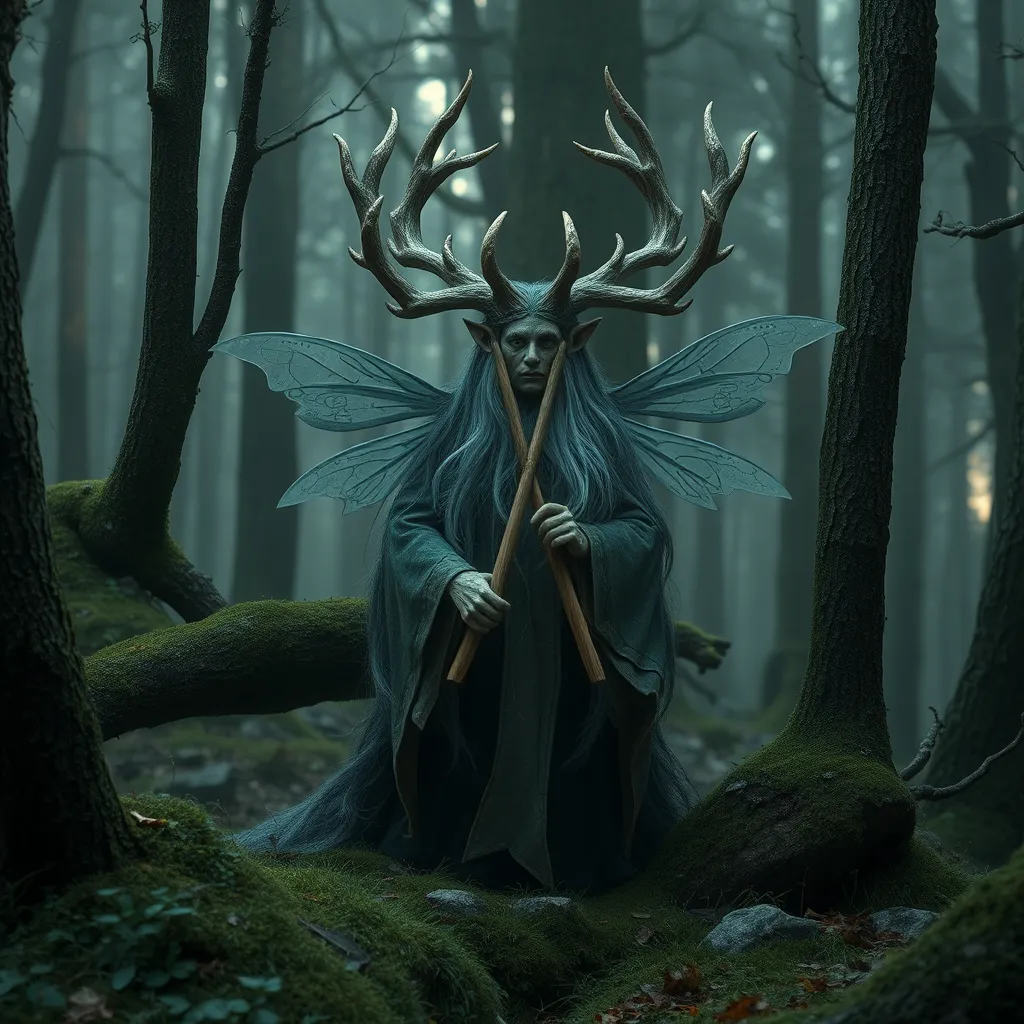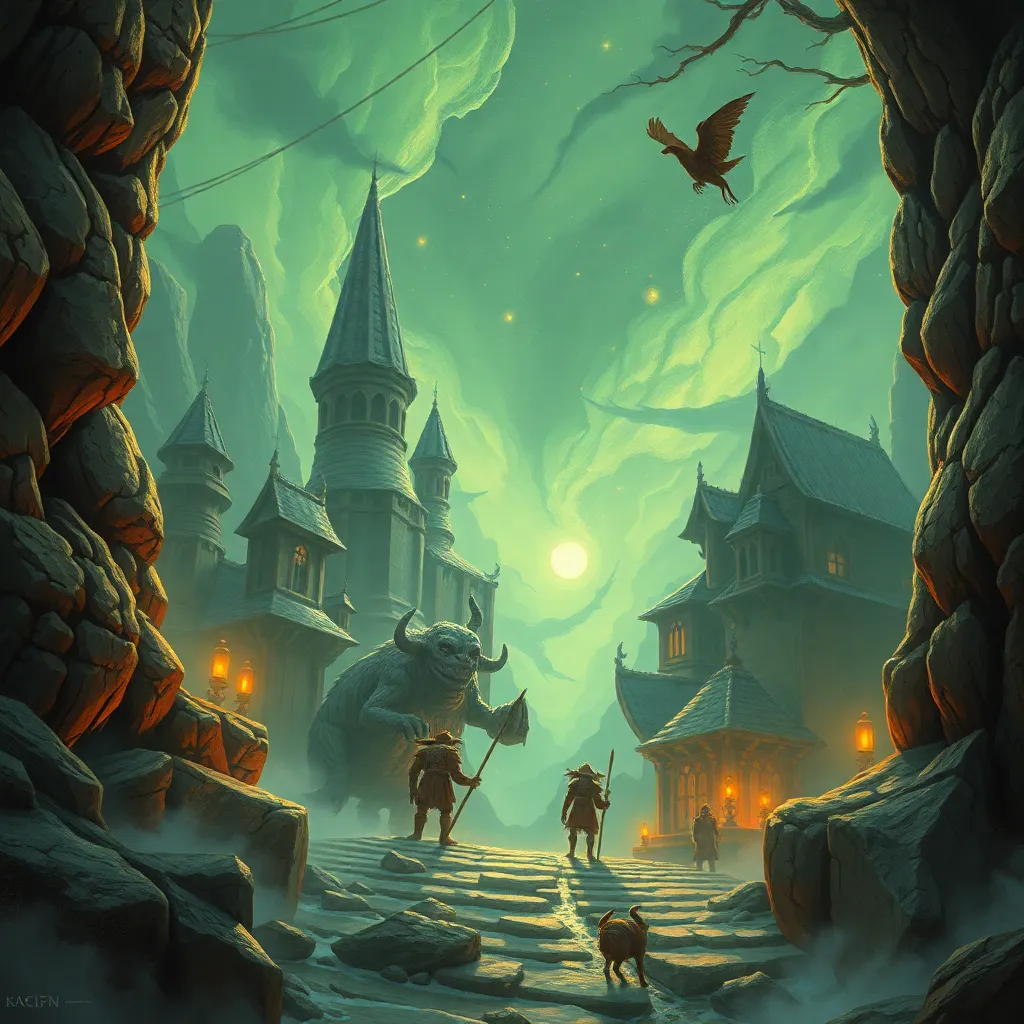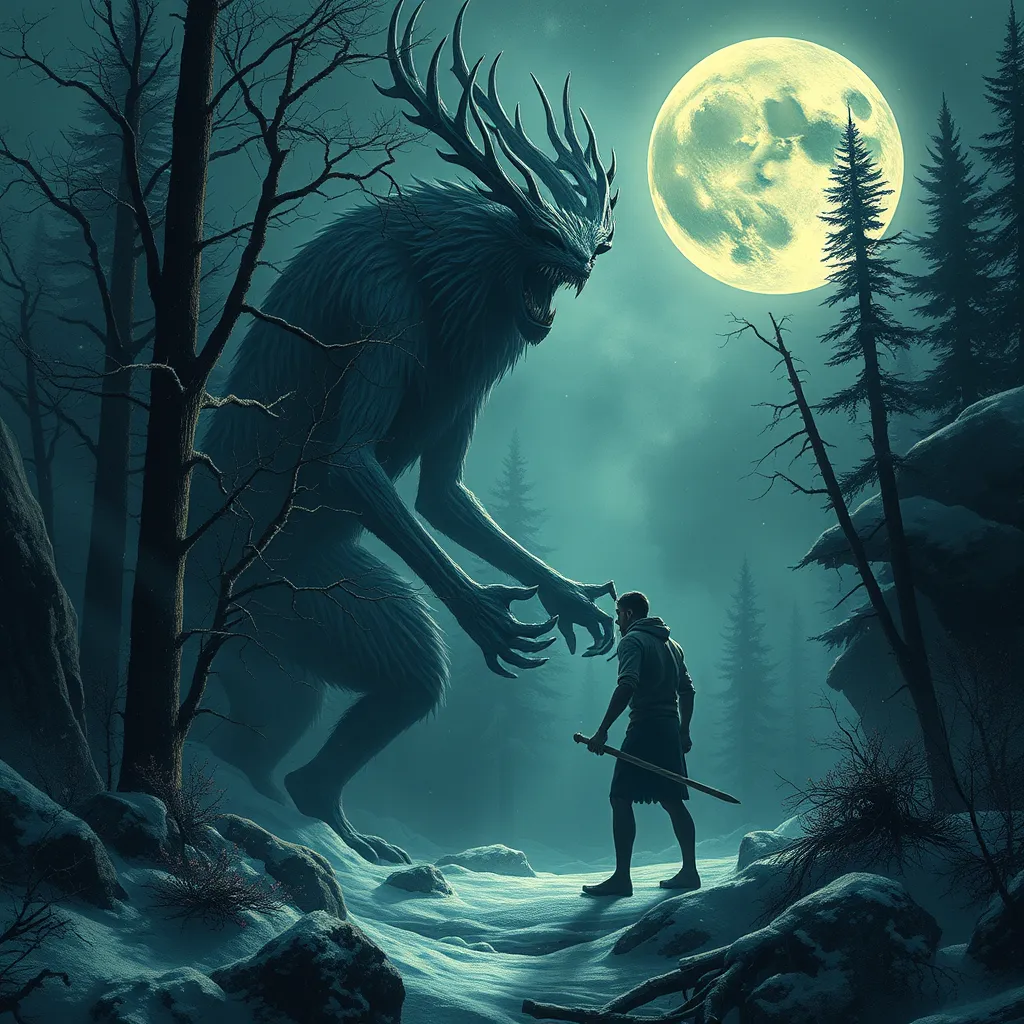The Huldra of Norway: Mythical Forest-Dwelling Fairies
I. Introduction to the Huldra
The Huldra is a captivating figure in Norwegian folklore, often depicted as a beautiful woman with a mystical aura. These enchanting beings are said to dwell in the dense forests of Norway, embodying the spirit of nature itself. The term “Huldra” is derived from the Old Norse word “hulda,” meaning “hidden” or “secret,” which reflects their elusive nature.
In Norwegian culture, the Huldra plays a significant role in folklore, symbolizing the connection between humans and the natural world. As a guardian of the forests, the Huldra teaches valuable lessons about respect for nature and the consequences of human actions.
II. Physical Characteristics of the Huldra
A. Description of Appearance: Beauty and Animal Features
The Huldra is often described as having extraordinary beauty, with long flowing hair and a mesmerizing presence that captivates those who encounter her. However, she possesses unique animal features, commonly depicted with a cow’s tail. This duality of beauty and beastly characteristics underscores her connection to nature and the wild.
B. The Significance of the Hollow Back
One of the most distinctive traits of the Huldra is her hollow back, which is usually hidden beneath her clothing. This feature symbolizes her otherworldly nature and serves as a reminder of her supernatural origins. The hollow back is often interpreted as a representation of the unseen aspects of nature, embodying the hidden depths and mysteries of the natural world.
III. The Huldra’s Habitat: Norwegian Forests
A. Description of the Natural Environment
The Huldra resides primarily in Norway’s lush forests, characterized by towering trees, vibrant flora, and serene landscapes. These environments serve as a perfect backdrop for her ethereal existence, where she can interact with the natural elements and the creatures that inhabit the woods.
B. Relationship Between the Huldra and Nature
The Huldra is often seen as a protector of the forests, embodying the spirit of the wilderness. She is deeply connected to the natural world, symbolizing the harmony between humanity and nature. In many folktales, the Huldra uses her powers to nurture the forest, ensuring its richness and vitality for future generations.
IV. Cultural Significance and Folktales
A. Historical Context of Huldra Legends
The legends of the Huldra have been passed down through generations, deeply rooted in Norway’s cultural heritage. These stories often reflect the values and beliefs of the time, highlighting the importance of nature and the consequences of human actions. The Huldra’s presence in folklore serves as a reminder of the respect and reverence that should be afforded to the natural world.
B. Popular Folktales Featuring the Huldra
Numerous folktales feature the Huldra, showcasing her interactions with humans. Some popular tales include:
- The Huldra and the Lumberjack: A tale of a lumberjack who falls in love with the Huldra, only to face dire consequences for neglecting his duties.
- The Huldra’s Dance: A story of a young man who is lured by the Huldra’s enchanting dance, leading him into a world of magic and peril.
- The Huldra’s Revenge: A cautionary tale about a greedy farmer who exploits the forest, only to be punished by the vengeful Huldra.
V. The Huldra as a Symbol of Femininity
A. Exploration of Gender Roles in Folklore
The Huldra embodies complex gender roles within folklore, representing both nurturing and dangerous aspects of femininity. She is often seen as a seductress, using her beauty to lure men into the forest. However, she also symbolizes strength and independence, challenging traditional gender roles and expectations.
B. The Huldra’s Influence on Modern Feminine Archetypes
In contemporary culture, the Huldra has become a powerful symbol of feminine strength and resilience. Her character has influenced modern interpretations of femininity, representing the duality of beauty and power. As society evolves, the Huldra continues to inspire new narratives around women’s roles and their connection to nature.
VI. Encounters with the Huldra
A. Common Themes in Huldra Encounters
Encounters with the Huldra often carry common themes, such as temptation, danger, and the power of nature. Those who come across her are typically mesmerized by her beauty, leading to a range of reactions from enchantment to fear. These encounters serve as metaphors for humanity’s relationship with nature, highlighting the fine line between admiration and exploitation.
B. The Consequences of Interacting with a Huldra
While some may find joy and love through their interactions with the Huldra, others face dire consequences. Folklore suggests that neglecting the Huldra or failing to respect her realm can lead to misfortune or punishment. These cautionary tales reinforce the importance of harmony between humans and the natural world.
VII. The Huldra in Contemporary Culture
A. Representation in Literature, Film, and Art
The Huldra has made her mark in contemporary literature, film, and art, often portrayed as a complex character that embodies both beauty and danger. Modern interpretations explore her role as a guardian of nature, reinforcing her significance in discussions about environmental conservation and women’s empowerment.
B. The Huldra’s Role in Modern Norwegian Identity
Today, the Huldra is celebrated as a cultural icon in Norway, representing the rich tapestry of Norway’s folklore and its connection to nature. Festivals and artistic expressions highlight her legacy, ensuring that the stories of the Huldra continue to resonate with new generations.
VIII. Conclusion: The Enduring Legacy of the Huldra
A. Summary of Key Points
In summary, the Huldra is a multifaceted figure in Norwegian folklore, symbolizing beauty, danger, and the intricate relationship between humanity and nature. Her physical characteristics, habitat, and the folktales associated with her all contribute to her enduring legacy.
B. The Huldra’s Role in Preserving Norwegian Folklore
The Huldra continues to play a vital role in preserving Norwegian folklore, serving as a reminder of the importance of nature and the complexities of femininity. As we explore her stories and significance, we ensure that the wisdom of the Huldra remains alive in our cultural consciousness.



